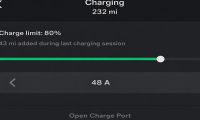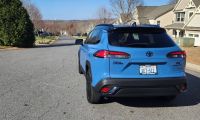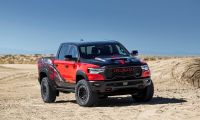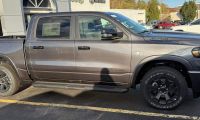For the third time in the last two months, Ford has announced a major Takata-related recall. The automaker announced Friday that it initiated another recall of nearly 3 million vehicles to replace the driver-side airbag inflator.
The latest recall follows the January recall of 3 million Ford vehicles in the first Takata-related recall of the year. I detailed the first major Takata-related recall of the year here. A second, smaller recall occurred about a month later in February. I explained this recall recall and a second that involved the Bronco Sport.
First Ford Recall Involves 2017 Approvals
Ford had submitted a petition to the National Highway Traffic Safety Administration (NHTSA) requesting that the agency accept the moisture-absorbing desiccant used when the inflators were installed in 2017 as approved.
After a nearly four-year wait, the agency ruled that the formulation used in the airbag inflators made by Takata in 2017, as part of its response to the most significant safety recall in automotive history, was acceptable. Ford argued in 2017 that driver-side airbags were original equipment devices. Further, the automaker argued that the devices contained a calcium sulfate desiccant.
The problem with Takata inflators, until that time, was that they used an ammonium nitrate-based propellant to inflate airbags. Over time, the ammonium nitrate deteriorated, causing the explosive blast that inflated the bags to become stronger. This led directly to the Takata airbag inflator recall, which became the most prominent automotive safety recall in history. This recall was also perhaps the most deadly equipment-based recall, with 26 deaths worldwide and 400 severe injuries between 2001 and 2017.
The issue involved inflators that exploded with far more force than required. Typically, an inflator propels the airbag to total inflation in about 20 milliseconds so that the driver hits the airbag at the full point. Almost as quickly, the airbag deflates. The driver, in theory, is supposed to escape with a minimum of injury.
Moisture-Laden Ammonium Nitrate Causes Problem
The problem with airbags and inflators affected by the safety recall was that the ammonium nitrate propellant exploded the airbag out of its housing with far too much force. The result was that the inflator housing burst into pieces of shrapnel that went zinging through the passenger compartment. If there were no humans in the way, things were good as the jagged metal pieces would bounce harmlessly off the interior. The problem with this was that since the airbag was deploying, the chances were excellent that a human or two would be upfront – the airbag recall involved the driver-side airbag and the passenger side device.
And since it occurred when the airbag was deploying because of an accident, there would naturally be a human or two involved.
Why did it happen? The answer, NHTSA and other investigators determined were in the manufacture. The millions of inflators involved in this safety recall – some 70 million airbag inflators were involved ultimately – in 55 million cars and trucks worldwide were poorly made by Takata's plants in Mexico. The manufacturing plants allowed detritus of various types to enter the inflators. The manufacturing process precluded an excellent seal allowing a long-term problem began to manifest itself. It was long-term because it took seven or more years before the ammonium nitrate began to deteriorate and increase its explosive force.
In a further "gotcha," the inflators were made in an area that was hot and humid. This helped to speed up the deterioration. It also impacted the recall in the United States. Vehicles with inflators that felt the problem's effect were in areas of higher humidity and heat, basically the Gulf Coast, American Southeast, and the West Coast. Also, the American Trust Territories of Samoa, Guam, and the Marianna Islands, plus Hawaii. You can see that millions of vehicles would be affected by this geographic distribution.
It's not that the manufacturer didn't know about this issue because it did. Indeed, the problem had its beginnings in the mid-1990s when an engineer proposed changing the inflators' design to make them more efficient. In this case, though, efficient meant more expensive, so the powers-that-be at Takata looked the other way. Yes, they did go through the motions of making things more efficient and safer – the airbags would be changing their propellant from ammonium nitrate. However, after a series of in-house tests, they determined that the new inflator design was too expensive and the new propellant was equally as expensive.
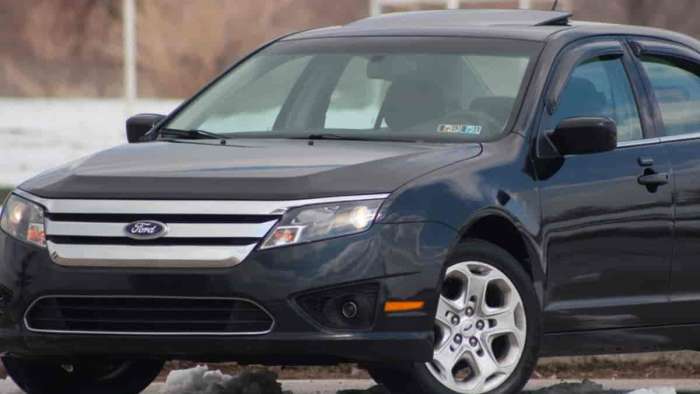
Old Design Retained For Inflators
So, they kept the old design and moisture-attractive propellant (ammonium nitrate attracts moisture, and if a unit seal isn't good, then there is a problem). Within about six years, the problems began to manifest themselves in a cluster of 2000-2002 Honda Civics and Accords. Ultimately, this cluster exhibited exploding airbag inflators in the 20 to 40 percent range. Takata did recall these vehicles did swap out the inflators, replacing the inflators with the first of four different designs. The base issues never changed – heat, poor manufacturing quality, and humidity.
By 2008, Takata had issued two or more significant recalls that involved hundreds of thousands of vehicles. After 2008, there were other related recalls, but they were by an individual carmaker and not industry-wide. Meanwhile, on hearing of the various recalls, NHTSA began turning the wheels toward an agency investigation, which usually takes a bit of time for the agency to act. By 2014, there were other recalls, and NHTSA had begun an investigation.
Takata, which didn't like the investigation in the first place, had tried on its own to solve the problem. Indeed, the manufacturer reportedly conducted several internal tests which showed poor performance. There were reports that the results of the Takata-backed investigations were
"lost." The results, it turns out, were not lost at all. Instead, there were reports that the results ended up in a landfill somewhere. In the end, only the head of Takata and his board knew what happened to the results. It would take another couple of years until the NHTSA testing results showed a problem with the Takata inflators.
By 2016, the walls were closing in on Takata. More and more, it looked as if Takata was putting out poorly made inflators. NHTSA's investigators had found the problems and were readying their case. Ultimately, Takata was found guilty of one criminal count, and it was also fined quite heavily by NHTSA. By the middle of 2016, Takata faced more than $300 million – NHTSA's maximum fines were $150 million at the time.
Takata Reeling By 2017
When 2017 rolled around, Takata was reeling. NHTSA ordered the manufacturer to do primary vehicle recalls, and it could not afford to do the recalls, take care of the problem, and manufacture replacement kits. By the middle of the year, things were bleak at Takata. They had replaced much of the board, and the company's third-generation head was no longer on the board. In the end, 2017 was telling as it was the year that Takata declared bankruptcy, and other manufacturers came in and picked up the burden.
It was quite a burden, too. Automotive manufacturers faced millions of vehicles and their inflators, each needing a recall. And, they worked out a multi-year timetable that was supposed to be complete by 2021. Instead, the major recall is still going on.
Last month, Ford recalled 3 million vehicles, while Chevrolet recalled roughly the same number. A bit later, Ford issued another recall of roughly 250,000 vehicles. Now, Ford has reinstituted a recall of 2.6 million vehicles. Ford reinstituted its latest recall because it believed the already-installed inflators were okay as they contained a desiccant.
The latest recall announcement covers vehicles that Ford believes were okay. During the investigation into the inflator explosions, the investigators determined that the reason was moisture. As Torque News has noted here and in an earlier story, investigators determined that the airbag inflators lacked proper sealing. Because they were not well-sealed, moisture entered inflators.
Takata Probers Turn To Other Industries For Answer
Indeed, investigators turned to other industries to find a cure for the moisture problems. Like the drug and electronics industries, they found that desiccants cured the problem of moisture-attractive propellants. The drug and electronic industries used desiccant modules to keep their products in good shape. The investigators found that ammonium nitrate can be kept in good shape with the addition of a desiccant. Ford's petition to the NHTSA said that since the desiccant-bearing inflator modules were acceptable, it requested that the agency grant its petition that a safety recall wasn't needed.
NHTSA disagreed and ordered the automaker to proceed with its previously announced safety recall for multiple vehicles with certain Takata driver-side front airbag inflators. In affected vehicles, the driver-side front airbag inflators were installed as original equipment and contained a calcium sulfate desiccant.
Unlike previously recalled Takata airbag parts, these driver-side airbags that contain the desiccant perform differently than the exploding airbag inflators. Ford believes its extensive data demonstrates that there should be no safety recall on driver-side airbags that employed the desiccant.
Ford launched its petition in August 2017 when it told the agency that it believed a recall is unwarranted because the desiccant-bearing airbag inflators perform differently. However, Ford respects the agency's move to deny Ford's petition and is proceeding with the recall accordingly. The NHTSA denial was in January 2021.

List Of Cars Involved In Recall
The action affects approximately 2.6 million vehicles in the U.S. and federal territories, 274,737 in Canada, and 46,078 in Mexico. The list includes:
- 2006-2012 Ford Fusions
- 2007-2010 Ford Edges
- 2007-2011 Ford Rangers
- 2006-2011 Mercury Milans
- 2006-2012 Lincoln Zephyrs/MKZs
- 2007-2010 Lincoln MKXs
Beginning the week of April 1, dealers will replace the driver-side front airbag inflator or airbag module. Owner notifications will begin the week of April 1. The Ford reference number for this recall is 21S12.
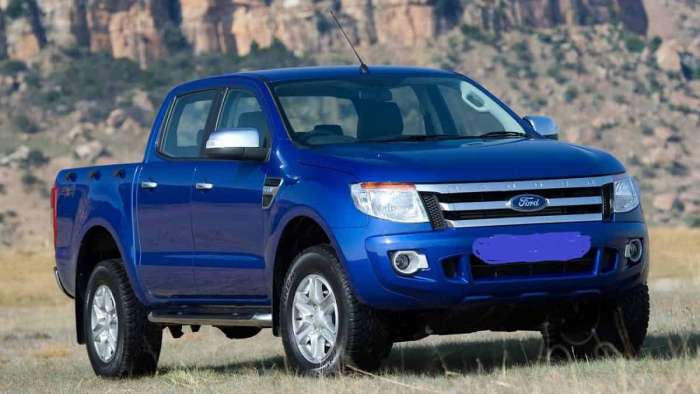
Overcured Tires Lead To Second Recall
According to a Continental Tire of America recall, certain tires supplied to Ford and other auto manufacturers may have cured beyond specification.
The affected tires may experience a framework break in the sidewall, leading to a sudden air loss. The same problem could also lead to a belt edge separation that could lead to a partial or complete tread or belt loss.
While these conditions may increase the risk of a crash or flat tire, Ford is not aware of any reports of accidents or injuries related to the issue.
This action affects 15,769 vehicles in the U.S. and federal territories, 3,082 in Canada, and 138 in Mexico.
The action covers certain 2018-2020 Ford F-250 and F-350 Super Duty models, some 2018 Ford F-150 pickups, and certain 2019 Ford Escape vehicles.
Owner notifications will begin during the week of March 29. When owners receive their notifications, they can bring their vehicles to dealers who inspect tires and replace those that match the suspect tire list. If a dealer replaces a tire on one side of a vehicle, a corresponding tire on the opposite side will also be replaced. If a dealer replaces a pair of front tires, the new pair of tires will be installed or moved to the rear axles. The tire list was provided to Ford by Continental Tire of America.
The Ford reference number for this recall is 21S10.
Marc Stern has been an auto writer since 1971. It was a position that filled two boyhood dreams: One that I would write, and two that I write about cars. When I took over as my newspaper's auto editor, I began a 32-year career as an automotive columnist. There isn't much on four wheels that I haven't driven or reviewed. My work has appeared in Popular Mechanics, Mechanix Illustrated, AutoWeek, SuperStock, Trailer Life, Old Cars Weekly, Special Interest Autos, etc. Today, I am the Ford F150 reporter for Torque News. I write how-to and help columns for online sites such as Fixya.com and others. You can follow me on Twitter or Facebook. Most of Marc's stories are part of Torque News Ford coverage. Check back again and search for Torque News Ford F-150 news for more F-150 truck news coverage.








